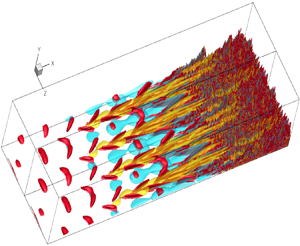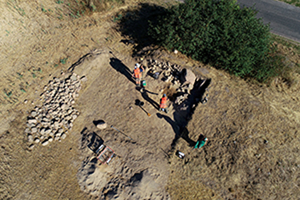Refine listing
Actions for selected content:
1419572 results in Open Access
Regulation of long-term care for older persons: a scoping review of empirical research
-
- Journal:
- International Psychogeriatrics / Volume 36 / Issue 4 / April 2024
- Published online by Cambridge University Press:
- 13 September 2023, pp. 289-305
-
- Article
-
- You have access
- Open access
- HTML
- Export citation
Active surveillance of carbapenemase-producing Enterobacterales using genomic sequencing for hospital-based infection control interventions
-
- Journal:
- Infection Control & Hospital Epidemiology / Volume 45 / Issue 2 / February 2024
- Published online by Cambridge University Press:
- 13 September 2023, pp. 137-143
- Print publication:
- February 2024
-
- Article
-
- You have access
- Open access
- HTML
- Export citation
Cognitive therapy for PTSD following birth trauma and baby loss: clinical considerations
-
- Journal:
- The Cognitive Behaviour Therapist / Volume 16 / 2023
- Published online by Cambridge University Press:
- 13 September 2023, e23
-
- Article
-
- You have access
- Open access
- HTML
- Export citation
High-subsonic boundary-layer flows of an organic vapour
-
- Journal:
- Journal of Fluid Mechanics / Volume 971 / 25 September 2023
- Published online by Cambridge University Press:
- 13 September 2023, A8
-
- Article
-
- You have access
- Open access
- HTML
- Export citation
The influence of hospital leadership support on burnout, psychological safety, and safety climate for US infection preventionists during the coronavirus disease 2019 (COVID-19) pandemic
-
- Journal:
- Infection Control & Hospital Epidemiology / Volume 45 / Issue 3 / March 2024
- Published online by Cambridge University Press:
- 13 September 2023, pp. 310-315
- Print publication:
- March 2024
-
- Article
-
- You have access
- Open access
- HTML
- Export citation
Incidence and risk factors for recurrent Clostridioides difficile infection in pediatric at-risk groups in selected Pediatric Investigators Collaborative Network on Infections in Canada (PICNIC) hospitals
-
- Journal:
- Infection Control & Hospital Epidemiology / Volume 45 / Issue 2 / February 2024
- Published online by Cambridge University Press:
- 13 September 2023, pp. 182-187
- Print publication:
- February 2024
-
- Article
- Export citation
Supply mechanisms of the geostrophic mode in rotating turbulence: interactions with self, waves and eddies
-
- Journal:
- Journal of Fluid Mechanics / Volume 971 / 25 September 2023
- Published online by Cambridge University Press:
- 13 September 2023, A10
-
- Article
- Export citation
Monitoring health disparities in healthcare-associated infection surveillance: A Society for Healthcare Epidemiology of America (SHEA) Research Network (SRN) Survey
- Part of
-
- Journal:
- Infection Control & Hospital Epidemiology / Volume 45 / Issue 4 / April 2024
- Published online by Cambridge University Press:
- 13 September 2023, pp. 526-529
- Print publication:
- April 2024
-
- Article
-
- You have access
- Open access
- HTML
- Export citation
Strongly mixing systems are almost strongly mixing of all orders
- Part of
-
- Journal:
- Ergodic Theory and Dynamical Systems / Volume 44 / Issue 6 / June 2024
- Published online by Cambridge University Press:
- 13 September 2023, pp. 1489-1530
- Print publication:
- June 2024
-
- Article
-
- You have access
- Open access
- HTML
- Export citation
On the effects of task focus and processing level on the perception–production link in second-language speech learning
-
- Journal:
- Studies in Second Language Acquisition / Volume 46 / Issue 1 / March 2024
- Published online by Cambridge University Press:
- 13 September 2023, pp. 214-226
- Print publication:
- March 2024
-
- Article
-
- You have access
- Open access
- HTML
- Export citation
City-Level Law and Action for Climate-Resilient Development in Southern Africa
-
- Journal:
- Transnational Environmental Law / Volume 12 / Issue 3 / November 2023
- Published online by Cambridge University Press:
- 13 September 2023, pp. 567-593
-
- Article
-
- You have access
- Open access
- HTML
- Export citation
Naples, China and the Cosmos: The Theology of an Eighteenth-Century Chinese Priest
-
- Journal:
- The Journal of Ecclesiastical History / Volume 75 / Issue 3 / July 2024
- Published online by Cambridge University Press:
- 13 September 2023, pp. 480-498
- Print publication:
- July 2024
-
- Article
-
- You have access
- Open access
- HTML
- Export citation
The reception of Iran's state propaganda by the Italian far right: recasting the diffusion of authoritarian discourse and narratives
-
- Journal:
- Italian Political Science Review / Rivista Italiana di Scienza Politica / Volume 54 / Issue 1 / March 2024
- Published online by Cambridge University Press:
- 13 September 2023, pp. 36-53
- Print publication:
- March 2024
-
- Article
-
- You have access
- Open access
- HTML
- Export citation
The non-autonomous Navier–Stokes–Brinkman–Forchheimer equation with Dirichlet boundary conditions: dissipativity, regularity, and attractors
- Part of
-
- Journal:
- Proceedings of the Royal Society of Edinburgh. Section A: Mathematics / Volume 155 / Issue 1 / February 2025
- Published online by Cambridge University Press:
- 13 September 2023, pp. 352-393
- Print publication:
- February 2025
-
- Article
-
- You have access
- Open access
- HTML
- Export citation
Equal-Sum-Product problem II
- Part of
-
- Journal:
- Canadian Mathematical Bulletin / Volume 67 / Issue 3 / September 2024
- Published online by Cambridge University Press:
- 13 September 2023, pp. 582-592
- Print publication:
- September 2024
-
- Article
- Export citation
The Origins of Hilltop Enclosures: late Bronze Age hilltop sites in Atlantic western Britain. By Lorrae Campbell. 298 mm. Pp xvii + 161, 68 figs, 61 tabs, BAR Brit ser 674. BAR Publishing, Oxford, 2022. isbn 9781407359427. £52 (pbk).
-
- Journal:
- The Antiquaries Journal / Volume 103 / October 2023
- Published online by Cambridge University Press:
- 13 September 2023, pp. 440-442
- Print publication:
- October 2023
-
- Article
- Export citation
Multi-faceted analyses of Poland's Bronze and Early Iron Age hoards
-
- Article
-
- You have access
- Open access
- HTML
- Export citation
THG volume 26 issue 3 Cover
-
- Journal:
- Twin Research and Human Genetics / Volume 26 / Issue 3 / June 2023
- Published online by Cambridge University Press:
- 13 September 2023, p. f1
-
- Article
-
- You have access
- Export citation
Maternal postnatal depressive symptoms and children’s internalizing problems: The moderating role of mother–infant RSA synchrony
-
- Journal:
- Development and Psychopathology / Volume 36 / Issue 4 / October 2024
- Published online by Cambridge University Press:
- 13 September 2023, pp. 1776-1788
-
- Article
- Export citation
Political Censorship in British Hong Kong: Freedom of Expression and the Law (1842−1997) by Michael Ng. Cambridge: Cambridge University Press, 2022. 228 pp. Hardcover: £29.99 / HK$39.99
-
- Journal:
- Asian Journal of Comparative Law / Volume 18 / Issue 3 / December 2023
- Published online by Cambridge University Press:
- 13 September 2023, pp. 449-450
-
- Article
- Export citation




















